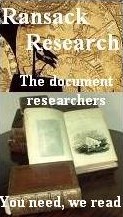|
Barry Clifford learned about the "Graveyard of the Atlantic" from his uncle Bill, when he was 12 years old. Not only the Graveyard of the Atlantic and the 3,000 and more ships lost along its shores, but also the 1717 shipwreck, the Whydah.
Barry skin-dived as a youth, and in the 1960s, while working as a lifeguard on Cape Cod, learned how to scuba dive.
He attended Western State College in Colorado, and graduated with a degree in sociology. He was also very active in sports. He married after college and had two children. Between 1971-1978 he established a successful building contractor business on Martha's Vineyard.
On the weekends, he dove in the waters off the coast, searching for shipwrecks. He also researched them, paying particular attention to the Whydah.
1976
Barry salvaged his first historic shipwreck this year, the General Benedict Arnold, which had sunk of Plymouth, Massachusetts in 1778. He then discovered the Agnes Manning, which had been lost in the late 1800s off Pasque in the Elizabeth Islands.
1983
In February, 1983, Barry obtained a permit from the Massachusetts Board of Underwater Archaeology. He "rounded up" some divers, equipped a salvage boat with electronic sensing gear, and "Fisher-style" mailbox blowers.
Mel Fisher (Treasure Salvors) served as consultant to the expedition. He provided his top technician for magnetometer surveys.
However, months of searching went by without success. Because the area had been used as a firing range for the US Navy during WWII, a lot offalse hits were made with the magnetometer, and time wasted excavating to see what had been found was modern shells rather than ancient cannon.
In addition, rival searchers for the Whydah applied for permits to search on either side of Barry's claim. They had used the same research material as Clifford, but interpreted it differently.
July, 1984
An NBC news crew films the hunt for the Whydah. NBC reporter Nancy Fernades was part of that crew. On the day the crew traveled out on the Vast Explorer, the magnetometer recorded a hit, the hit turned out to be a cannon, and a coin discovered at the same time had the date 1684 on it. Under 18 feet of sand in just 25 feet of water, 1,500 feet off the beach, they had found the Whydah.
During the next several months, Clifford's company, Maritime Explorations Inc., hired some underwater archaeologists and preservationists. Because this ship had all its contents intact, he wanted it properly documented.
Work began at the site in ernesy during the summer of 1984. In December, news reports commented that several million dollars in treasure had been found.
Clifford could do little in the 1985 season, because "a permit from the Army Corps of Engineers was needed, which would allow Maritime Explorations to begin bringing up the pirate trreasure." according to Burgess. (But what of the material brought up during the summer?)
Fall, 1986
Kenneth Kinkor had been researching the background of a pirate "connected" with the Whydah for his Illinois State University master's thesis.Clifford suggested he join Maritime Explorations.
Dr. Paul Johnson, curator of Maritime History at the Peabody of Salem, said at the time, "The Whydah's potential as a source of information about pirates is tremendous."
|
Discoveries/Projects
the Agnes Manning (1880s)
General Benedict Arnold (1778)
the pirate ship Whydah (1717)
Links
http://www.whydah.com/
National Geographic, May 1999 article
Books on Barry Clifford
Sunken Treasure: Six Who Found Fortunes, Robert F. Burgess, Dodd, Mead & Company, 1988
Treasure Wreck: The Fortunes and Fate of the Pirate Ship Whydah, Arthur T. Vanderbilt, 1986
General Treasure Hunting Books
The Treasure Diver's Guide, John S. Potter, 1960.
|
